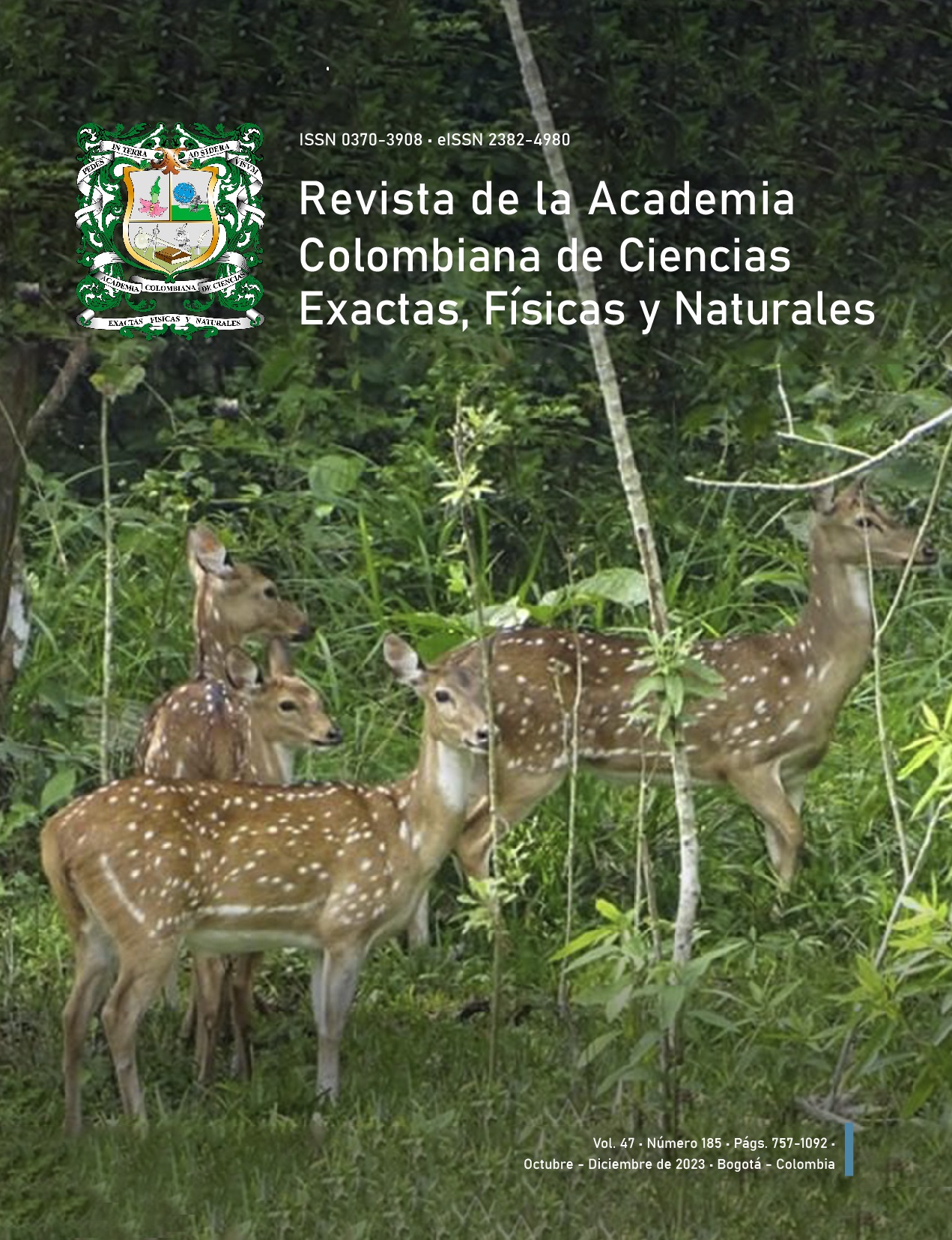Abstract
The analysis of the academic trajectory is of the utmost importance for Scholar Program administrators, since it allows them to identify areas of opportunity for the Academic Program improvement. In this paper, we analyzed academic trajectory of a group students enrolled at a University Mathematics Program. To that aim, we utilize a stochastic process for modeling the academic trajectory. The model is defined in terms of a progressive Markov chain with two absorbing states. The inferential theory presented in this paper deals with the definition of a random sample for a Markov chain, the construction of the likelihood function and the estimation of the Markov chain parameters. Using these estimates and delta method, confidence intervals are calculated for the mean absorption time, the mean exit time of a state and the absorption probability into a state, these quantities correspond to expected time a student either concludes or drops out of the Program; the expected sojourn time in academic term and the probability a student either concludes or drops out of the Program, respectively.
Keywords
References
Anderson, T. W., Goodman, L. A. (1957) Statistical Inference about Markov Chains. The Annals of Mathematical Statistics, 28(1), 89–110.
Casella, G., Berger, R. (2002) Statistical inference (2nd ed.). Thomson Learning.
Durrett, R. (2016) Essentials of stochastic processes (Third). Springer, Cham.
Husna Yahaya, Khairun Hasan, Husna. (2021) Application of markov chain in students ́assessment and performance: A case study of school of mathematical sciences, one of the public university in malaysia. ITM Web Conf., 36, 01004.
Karson, M. J., Wrobleski, W. J. (1976) Confidence intervals for absorbing markov chain probabilities applied to loan portfolios. Decision Sciences, 7(1), 10–17.
Kemeny, J. G., Snell, J. L. (1976) Finite Markov chains. Springer-Verlag, New York-Heidelberg.
Mendoza, M. (1994) Asymptotic normality under transformations. a result with bayesian applications. TEST: An Official Journal of the Spanish Society of Statistics and Operations Research, 3, 173–180.
Muhammad, M., Falgore, J. Y., Sani, U. (2019) Analysis of students’ academic performance and progression (using markov chain approach).
Norris, J. R. (1998) Markov chains (Vol. 2). Cambridge University Press, Cambridge.
Perera, S., Bell, M. G. H., Kurauchi, F., Kasthurirathna, D.(2019) Absorbing markov chain approach to modelling disruptions in supply chain networks. 2019 Moratuwa Engineering Research Conference (MERCon), 515–520.
Pinsky, M. A., Karlin, S. (2011) An introduction to stochastic modeling (Fourth). Elsevier/Academic Press, Amsterdam.
Serfling, R. J. (1980) Approximation theorems of mathematical statistics. John Wiley & Sons, Inc., New York.
Wang, L., Laird-Fick, H., Parker, C., Solomon, D. (2021) Using markov chain model to evaluate medical studentsa ̈oˆ trajectory on progress tests and predict usmle step 1 scores—a retrospective cohort study in one medical school. BMC Medical Educa- tion, 21.
Yu, H.-m., Yang, S.-s., Gao, J.-w., Zhou, L.-y., Liang, R.-f., Qu, C.-y. (2013) Multi- state markov model in outcome of mild cognitive impairments among community elderly residents in mainland china. International Psychogeriatrics, 25(5), 797– 804.
Zakarczemny, M., Zajƒoˆcka, M. (2022) Note on DNA analysis and redesigning using markov chain. Genes, 13(3).

This work is licensed under a Creative Commons Attribution-NonCommercial-NoDerivatives 4.0 International License.
Copyright (c) 2023 Revista de la Academia Colombiana de Ciencias Exactas, Físicas y Naturales





